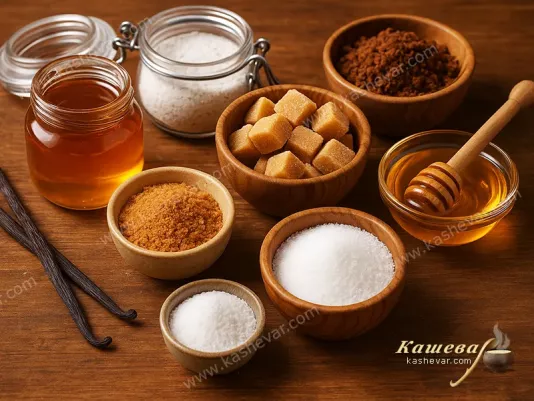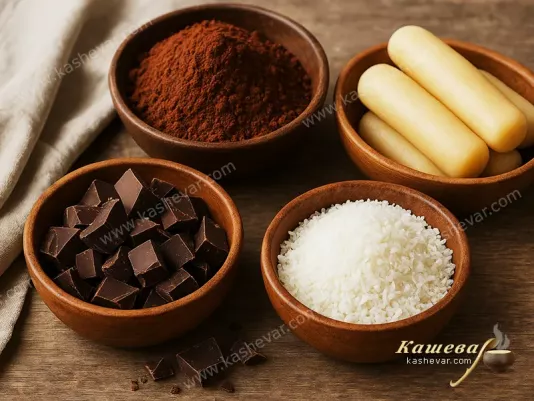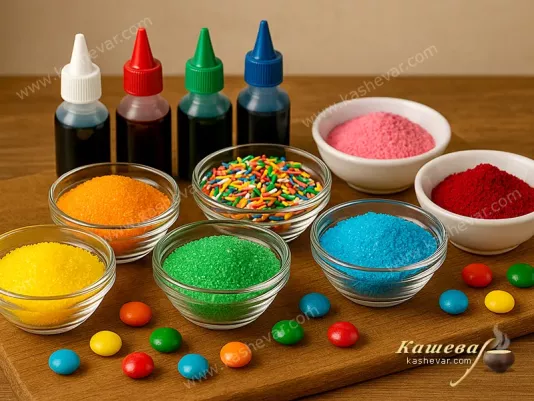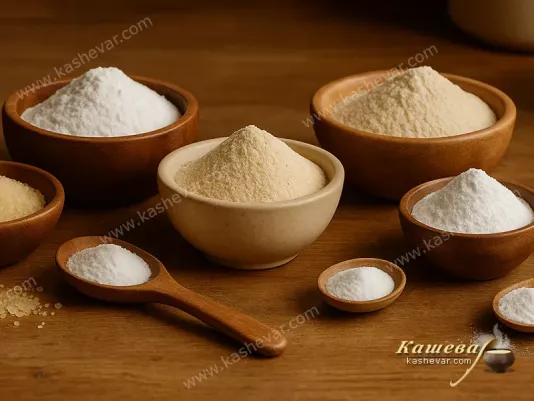Confectionery Ingredients
Confectionery ingredients for me are an essential basis for creating any desserts and baked goods. Each of them has its role: some add sweetness and depth of flavor, others ensure tender texture or lightness of dough, and others enhance the color and aroma of the finished dish. When I use sugar or its substitutes, I know I can adjust the level of sweetness according to the recipe. Food colorings and additives make desserts festive and attractive, while gelling agents and leavening agents form the right structure, which is so important for mousses, creams, or sponge cakes. I always pay special attention to fillers: chocolate, cocoa, coconut flakes, or marzipan give desserts character and make them more refined. For me, all these ingredients are real tools of creativity that open up endless possibilities and allow me to turn ordinary recipes into small culinary masterpieces.
Different Types of Confectionery Ingredients
Sugar and Its Substitutes in Baking
Sugar has always been the basis for most recipes in my kitchen, and over the years I have learned to use it differently depending on the effect I want to achieve. White sugar is the universal option that provides sweetness and the right dough structure, making cakes golden and crispy, and creams stable. I love brown sugar for its caramel flavor and moist texture, thanks to which muffins or cookies turn out especially rich and tender. Powdered sugar for me is a tool for fine work: with it, I can easily create delicate glazes, decorate cakes and pastries, giving them an elegant look. Vanilla sugar adds a pleasant aroma that immediately evokes a sense of home comfort, and I always use it in yeast dough or creams. Honey takes a special place – a natural substitute that enriches desserts with its unique taste and benefits. I often add it to gingerbread, sauces, or drinks to emphasize naturalness and create a deeper flavor. By combining these ingredients, I can vary the results and get desserts from light and delicate to rich and expressive.
Food Colorings and Additives for Expressiveness
I use confectionery colorings and additives when I want the dessert to look festive and original. Food colorings allow me to give creams, fondant, or glaze bright shades, making the cake the centerpiece of any celebration. I enjoy experimenting with tones, combining several colors, or creating gradients so that the result looks even more professional. Citric acid in my practice helps balance sweetness, add pleasant acidity to desserts, and highlight the flavor of fruit fillings. I love vanilla extract for its intense aroma: even a few drops can change the mood of a dish, making it refined and pleasant. Titanium dioxide I use to achieve pure white shades in creams or glazes when I need a perfect background for bright accents. These ingredients are not just auxiliary for me, but true tools of creativity that allow me to add expressiveness to desserts and make them more appealing.
Gelling Agents and Leavening Agents in Baking
In my culinary practice, gelling agents and leavening agents take a special place because they form the right structure of dishes. I use agar-agar and gelatin for making mousses, jellies, and no-bake cakes – they provide the necessary elasticity and stability. Pectin helps create high-quality fruit jams and fillings that hold their shape while remaining tender. Baking powder and soda are irreplaceable for me in baking muffins or sponge cakes, as they make the dough light and airy. I always monitor the right proportions since the even rise of the dough depends on them. Yeast – both dry and fresh – helps me create bread and pastries with a unique aroma and texture. Sometimes I use rice paper for light desserts or decoration, as it gives dishes originality and elegance. I always apply these ingredients thoughtfully because not only the taste but also the appearance and quality of the finished dessert depend on them.
Confectionery Fillers for Variety
Confectionery fillers for me are a way to diversify flavor and make every dessert special. Chocolate, whether white or dark, I use both as filling and for glaze or decoration, and it always creates a festive atmosphere. Cocoa powder adds richness and depth of flavor, while marzipan gives desserts delicacy and a tender nutty note. Coconut flakes for me are not just decoration but also a textural element that creates contrast in cakes or pastries. Poppy seeds, which I often add to rolls or buns, provide a special aroma and make baked goods more interesting. Fondant and marshmallows allow me to create bright decorative effects and give desserts a festive look. Sometimes I even use ice cream as a filling or addition to cakes and pies since it creates a pleasant contrast of textures and temperatures. Thanks to these ingredients, I can realize new ideas, experiment with flavors, and create unique combinations that make desserts more original.
Combining Confectionery Ingredients in Creativity
Over time, I realized that true culinary magic happens when you combine different confectionery ingredients correctly. Sugar combined with vanilla extract creates a delicate aroma, while adding honey to the dough makes the baked goods moister and richer. When I use brown sugar together with cocoa or chocolate, I get a deep and harmonious flavor that always delights my guests. I combine food colorings with fondant or creams to create festive and original desserts. Gelling agents and leavening agents help me control texture – from tender mousses to airy sponge cakes. And the addition of fillers such as marzipan or coconut flakes makes desserts more expressive and unique. For me, working with confectionery ingredients is always an experiment and an opportunity to create new combinations that bring joy both to me and to those who taste my desserts.



